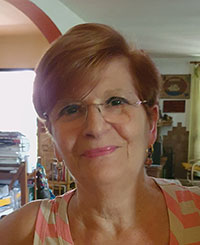 Angela Baldanza (corresponding author). Department of Physics and Geology, University of Perugia, Via Pascoli, 06123 Perugia, Italy; Museo dei Cicli geologici di Allerona- Il Golfo dei Cetacei. Via Roma, 05011 Allerona (Terni, Italy). angela.baldanza@unipg.it
Angela Baldanza (corresponding author). Department of Physics and Geology, University of Perugia, Via Pascoli, 06123 Perugia, Italy; Museo dei Cicli geologici di Allerona- Il Golfo dei Cetacei. Via Roma, 05011 Allerona (Terni, Italy). angela.baldanza@unipg.it
Aggregate professor (retired) at the University of Perugia (Italy). Research fields: Biostratigraphy (Calcareous Nannofossils and Foraminifera), Paleoecology and paleoenvironmental reconstruction of marine and continental successions (from Jurassic to Quaternary). Archeometry (characterization of raw and building materials from historical Greek, Roman, and Middle Age Italian sites). Conservation and enhancement of plant fossil record (Dunarobba Fossil Forest, Umbria, Italy). Committed to the dissemination of scientific research through national television channels. Member of AIQUA (Italian Association for Quaternary research). Scientific director of the Allerona Museum from 2015 onward.
![]()
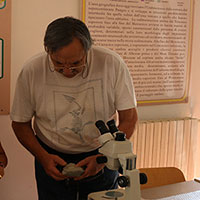 Giovanni Pasini. Via Alessandro Volta 16, I-22070 Appiano Gentile (CO), Italy. giovannialdopasini@gmail.com
Giovanni Pasini. Via Alessandro Volta 16, I-22070 Appiano Gentile (CO), Italy. giovannialdopasini@gmail.com
Retired teacher in Natural Sciences at lower secondary school. Volunteer representative with the Paleontological section of the MSNM, Milan - Italy. Experienced in field researchs and studies from Triassic to Cretaceous in Madagascar and Morocco. Researcher in Decapoda paleontology, systematics and behavior.
![]()
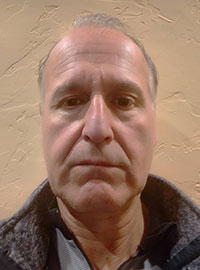 Alessandro Garassino. Department of Earth and Biological Sciences, Loma Linda University, Loma Linda, 92350 CA, USA. alegarassino@gmail.com
Alessandro Garassino. Department of Earth and Biological Sciences, Loma Linda University, Loma Linda, 92350 CA, USA. alegarassino@gmail.com
Curator of the Department of Invertebrate Palaeontology of the Natural History Museum of Milan (Italy) until 2017 and research adjunct of the Department of Earth and Biological Sciences of Loma Linda University (California) since 2018. The main activity is based on research and study on Mesozoic and Cenozoic decapod crustaceans with particular attention to decapod faunas preserved in Fossil-Lagerstätten.
![]()
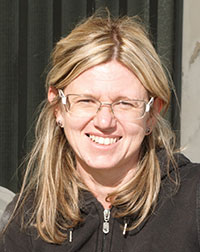 Antonella Carosi. Department of Chemistry, Biology and Biotechnology, University of Perugia, St. Elce di Sotto 5, 06123, Perugia, Italy. antonella.carosi@unipg.it
Antonella Carosi. Department of Chemistry, Biology and Biotechnology, University of Perugia, St. Elce di Sotto 5, 06123, Perugia, Italy. antonella.carosi@unipg.it
Inland water Ecology Researcher at the Department of Chemistry, Biology and Biotechnologies of the University of Perugia (Italy). Research interests focused on the distribution, ecology and biology of freshwater fish and crayfish populations, with special reference to the management and impact assessments of alien species invasions, and to the native biodiversity conservation. Member of the Steering Committee of AIIAD (Italian Association of Freshwater Ichthyologists). Member of the Société Française d'Ichtyologie.
![]()
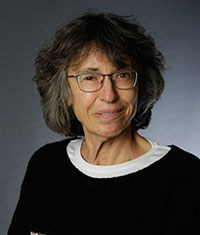 Bettina Reichenbacher-Department for Earth and Environmental Sciences, Ludwig-Maximilians-University München, Richard Wagner-Str. 10, 80333 Munich, Germany. b.reichenbacher@lrz.uni-muenchen.de
Bettina Reichenbacher-Department for Earth and Environmental Sciences, Ludwig-Maximilians-University München, Richard Wagner-Str. 10, 80333 Munich, Germany. b.reichenbacher@lrz.uni-muenchen.de
Bettina Reichenbacher is Professor of Paleontology at the Department of Earth and Environmental Sciences at Ludwig Maximilian University of Munich. Her research focuses on the evolutionary history of today's particularly species-rich groups of teleosts (cichlids, gobies, killifish) in the context of global-regional palaeogeographic and palaeoenvironmental changes.
![]()
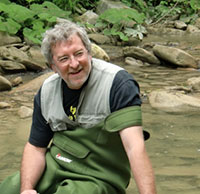 Massimo Lorenzoni- Department of Chemistry, Biology and Biotechnology, University of Perugia, St. Elce di Sotto 5, 06123, Perugia, Italy. massimo.lorenzoni@unipg.it
Massimo Lorenzoni- Department of Chemistry, Biology and Biotechnology, University of Perugia, St. Elce di Sotto 5, 06123, Perugia, Italy. massimo.lorenzoni@unipg.it
Ecologist and ichthyologist, he is Associate professor in ecology at the Department of Chemistry, Biology and Biotechnologies of the University of Perugia (Italy). Research activity focuses primarily on the conservation status of native fish biodiversity in inland waters, with particular reference to: 1) distribution, biology, and ecology of endemic species, 2) analysis of the impacts of anthropogenic stresses (introduction of invasive alien species, environmental alterations, climate change), and 3) sustainable fisheries management and concrete conservation actions. Member of AIIAD (Italian Association of Freshwater Ichthyologists) and SIB (Italian Society of Biogeography).
![]()
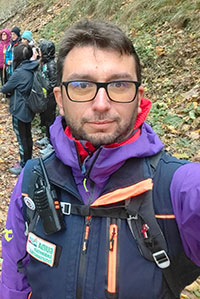 Federico Famiani. Parco e Museo Vulcanologico, Piazza Roma 1, 05010 San Venanzo, Terni, Italy. federico.famiani@gmail.com
Federico Famiani. Parco e Museo Vulcanologico, Piazza Roma 1, 05010 San Venanzo, Terni, Italy. federico.famiani@gmail.com
Federico Famiani is a hiking guide, a teacher and a geologist. He lives in Umbria with a passion for geology and promoting geoheritage, especially Monte Subasio. He has worked with scientific associations and universities, contributing to research on geology and stratigraphy. He is also involved in Volcanological Museum of San Venanzo. He was awarded for curating the geopaleontological exhibition in Regional Park of Monte Subasio. He’s also active in workshop and laboratory, making geology accessible to schools and local communities.
![]()
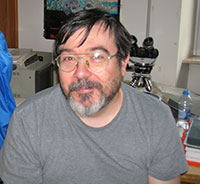 Roberto Bizzarri. Department of Physics and Geology, University of Perugia, Via Pascoli, 06123 Perugia, Italy; PhD freelance researcher. roberto.bizzarri@libero.it
Roberto Bizzarri. Department of Physics and Geology, University of Perugia, Via Pascoli, 06123 Perugia, Italy; PhD freelance researcher. roberto.bizzarri@libero.it
Geologist and Freelance Researcher in Sedimentology and Stratigraphy. MSc in Geological Sciences (2001), PhD in Earth Sciences (2007) at the University of Perugia, Italy. Still at the University of Perugia, he collaborated on research projects of the Earth Sciences Department (now Department of Physics and Geology) as Research Assistant/Research Fellow and Freelance Researcher (between 2003 and 2015), and as external collaborator/Expert on the Subject for Sedimentology and Stratigraphy from 2018 onwards. Starting in 2019, his main job is a tenured teacher position (Natural Science) in a High School. He also leads on independent research projects.

